 | 
| 
 
No. 3 Folding Pocket Kodak (1900 - 1915)The No. 3 Folding Pocket Kodak is a typical camera for the so called 'family photography' of the early 1900's.
To enlarge the market, Eastman tried to interest the ordinary man or woman in taking pictures. Photography had to be more than a hobby of a few serious amateurs, it had to be part of everyday family life. The camera in this video is meant for this kind of photography. It: - is compact and easy to take with you
- is easy to use
- takes pictures of an acceptable size: 3 1/4 x 4 1/4 inch (8x11 cm)
- takes them on easy to use daylight loading film
- even has a small foot under the drop bed, so that the camera could be put on a table, stool or any other convenient surface to make time exposures. The usual family photographer didn't have a tripod! The patent (698.901) especially mentions this.
This particular camera is the original first Model A, that was introduced in April 1900. A lot of different models were introduced in the years until 1915, when the camera was discontinued. Some models had a rising front, and during its lifetime it could be had with all sorts of lenses and shutters, ranging from simple and cheap ($18) to luxurious and expensive (up to $ 68). The No. 3 Folding Pocket Kodak is a typical rollfilm camera, but the back could be exchanged for a glass plate back, with ground glass and plate holders.
The No. 3 FPK is not rare at all, more than 288.000 were made. Although the No. 3 Folding Pocket Kodak was marketed as a camera for family photography, it was also suitable for the more 'serious' amateur photographer. One important accessory is the plate back. It replaced the roll film back so photos could be taken on glass plates. Glass plates had some advantages over roll film: - they were perfectly flat (resulting in sharper images)
- they could be developed seperately
- the negatives didn't curl when dry
- they were cheaper
- the image could be composed and focused on a ground glass
But using glass plates also had some disadvantages: - they were heavy
- and could break
- taking a photo was cumbersome
- if using the ground glass, you also had to use a tripod to put the camera on. Otherwise the use of the ground glass did make no sense.
All this was not so great an objection for the serious amateur, but it would have spoilt the fun for the family photographer.
In the video you see a No. 3 Folding Pocket Kodak Model A with a horizontal model plate back. A ground glass in a wooden frame is inserted. It can be replaced by a metal holder for one single glass plate.
Another glass plate back is of the vertical style. That one also has a red window in the back panel, so it could be used with roll film as well. | 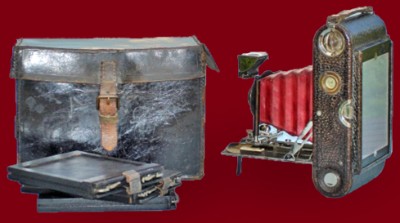
Another version of a plate back. The ground glass can
be replaced with a plate holder or a wooden panel
with a red window. | 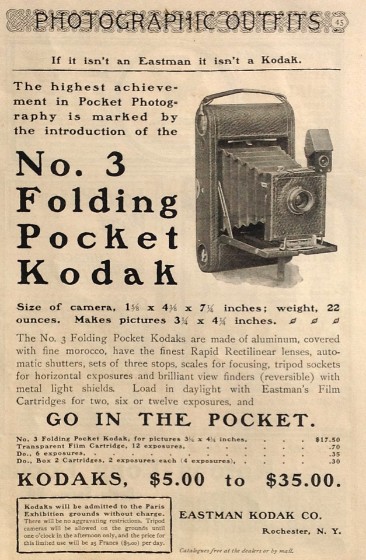
Ad for an early model of the No. 3 FPK | 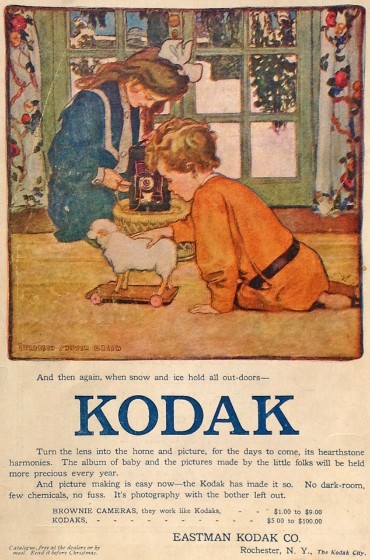
Christmas time ad for a later version of the No. 3 FPK. It addressed the family photographer: "Turn the lens into the home and picture, for the days to come, its hearthstone harmonies." | 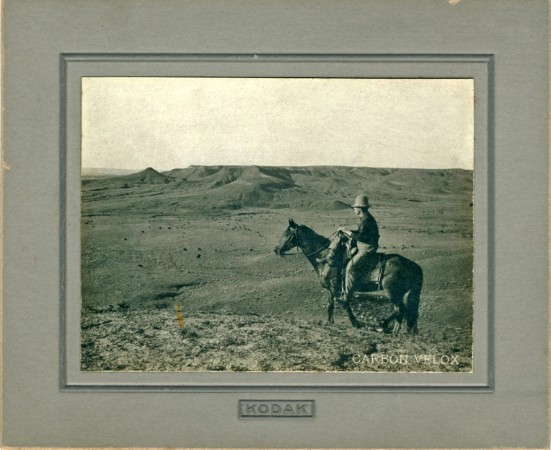
Sample photo made with the No. 3 Folding Pocket Kodak | 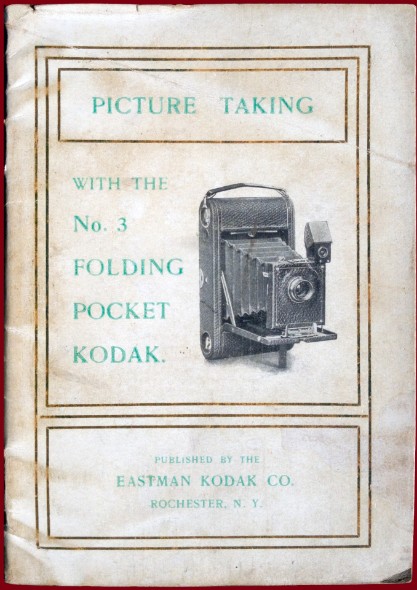
Instructions, dated April 1900. | |
 |
| |  |
|